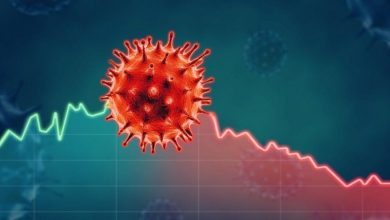What is a spring allergy? What are the symptoms of spring allergy?

What is a spring allergy? What are the symptoms of spring allergy?
With the arrival of October, the weather started to get colder. As the weeds in the fields begin to grow, the pollens that spread around enter the sinus path through the nose. Pollen deposited here causes the capillaries to expand. It causes diseases along with it. So what is a spring allergy? What are the symptoms of spring allergy and is there any treatment? Here are the answers to the questions:
Generally, the allergic condition caused by pollen is also seen against changing air pressure and sensitivity to the sun. In people who are sensitive to such situations, the immune system is activated. Realizing that the body is in danger, it causes diseases in the eyes, nasal glands and respiratory tract as a result of the reaction of the immune system. Spring allergy, which manifests itself with symptoms such as shortness of breath, tearing, drowsiness, constant sneezing and loss of appetite, is ignored by many people. However, spring allergy, a condition that requires treatment, recurs constantly. Spring allergy occurs when the capillaries in the eyes and nose expand under the influence of environmental factors. It is also called hay fever or pollen allergy among the people. When spring allergy progresses, it causes diseases such as conjunctivitis in the eyes, allergic rhinitis in the upper respiratory tract, asthma in the lungs, and eczema in the skin.
- It starts in March and continues until June.
- Situations such as sneezing, headache, sleep and loss of appetite are observed.
- Spring allergy can cause diseases that trigger upper respiratory tract diseases.
- The conditions that cause the increase in spring allergy; dust is pollen and a sudden change of air.
- In these transitions, approximately 3 liters of water should be consumed. In addition, vitamins D and C should be taken in abundance.
DISEASES CAUSED BY SPRING ALLERGY
– Nasal congestion and enlargement of the nasal glands are the most common ailments in spring allergy. Pollens that enter the nasal passages and settle in the glands cause congestion. The blockage triggers continuous sneezing. Since the frequency of sneezing negatively affects blood flow and heart rate, the seemingly minor discomfort leaves serious damage.
– It accumulates in the lungs with the spread of dust and pollen with the wind. Asthma occurs with the inflammation of the lungs over time. With the obstruction of the bronchi over time, there are situations such as shortness of breath, waking up suddenly during sleep.
spring allergy is caused by pollens, pets, increased temperature and dust spring allergy is caused by pollens, pets, increased temperature and dust
– Allergy affecting the nose and lungs also affects the eye canals. The eye disease called allergic conjunctivitis can go as far as causing vision loss if not treated early. It manifests itself with symptoms such as swollen eyes, constant watering and itching while waking up from sleep.
– One of the common conditions is experiencing a headache that resembles the symptoms of sinusitis and migraine diseases. However, the basis of the headache experienced during the allergic process is the inability of the body pressure to keep up with the changing weather conditions. This not only causes headache but also ear pain. The reason for the pain is experienced when the body temperature is not prepared for the changing air temperature and the difference in internal and external oxygen puts pressure on the respiratory canals.

WHAT ARE THE SYMPTOMS OF SPRING ALLERGY?
- – Intraocular redness, itching and watering
- Eyes that are sensitive to light and ears that are sensitive to sound
- – Having a temperature difference in the body
- Lack of appetite and feeling tired all the time
- More than 5 sneezes in one go
- Increased chest and heart pain
- Tinnitus
- Runny nose and coughing constantly





